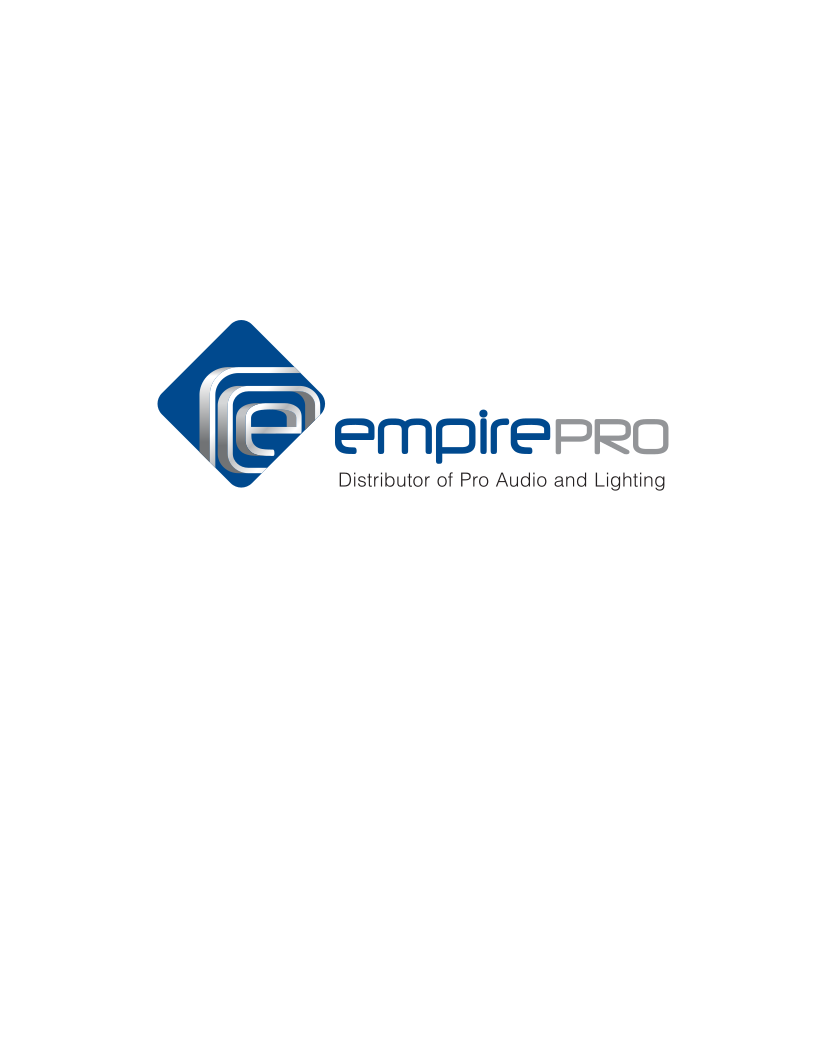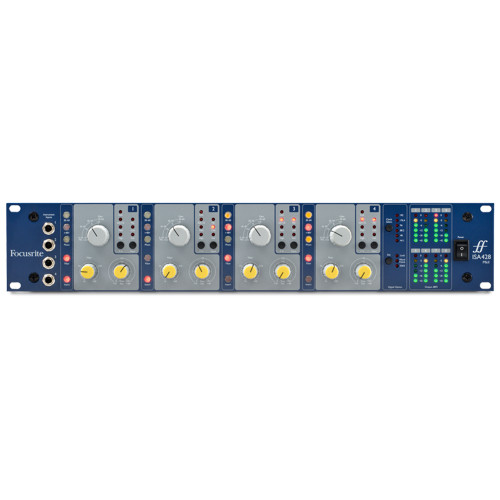Overview
Back in the mid-1980s, Sir George Martin commissioned console design legend Rupert Neve to build a series of new, ‘no compromise’ console modules for AIR studios. They were an enormous hit and formed the basis of the Focusrite Studio Console, widely regarded as the best-sounding analogue recording console of all time. Today, the descendants of those modules are used in leading studios around the world, and their sought-after Focusrite Heritage Sound lies behind thousands of hit records. Today’s ISA Range from Focusrite puts the classic sound of Focusrite into your own studio or live performance.
Features
-
ISA series transformer-based preamplifier
-
Flexible independent DI channel
-
Switchable impedance
-
Headphone output with volume control
-
Dedicated insert point
-
Optional stereo 192kHz A-D converter
-
Lundahl LL1538 Input Transformer
-
Backlit VU meter with variable calibration
-
TRS Jack cue mix left input
-
TRS Jack cue mix right input
-
1/4” TRS Jack headphones output
-
TRS jack send
-
XLR balanced line output
-
XLR DI output
-
TS jack DI through
-
XLR Mic input
-
One XLR and one TRS line input
-
XLR Instrument input TRS Jack
-
External ADC input TRS Jack
-
TRS jack return
Specifications
|
Gain range |
0dB to 60dB in 10dB steps + 20 dB of variable gain |
|
|
Input Impedance |
Switched Impedance setting Equivalent Input Impedance at 1kHz |
|
|
|
||
|
|
||
|
EIN (Equivalent Input Noise) |
-126dB measured at 60dB of gain with 150 Ohm terminating impedance and 22Hz/22kHz band-pass filter |
|
|
Noise |
Noise at output with unity gain (0 dB) and 22 Hz-22 kHz band pass filter |
|
|
Signal-to-Noise Ratio |
106 dB relative to max headroom (9dBu) |
|
|
Total Harmonic Distortion + Noise |
Measured at medium gain (30dB) with a 1kHz -20dBu input signal and with a 22Hz/22kHz band-pass filter |
|
|
Frequency Response |
At minimum gain (0 dB) |
|
|
|
At maximum gain (60dB) |
|
|
CMRR (Common Mode Rejection Ratio) |
98dB (Channel 1, 1kHz, maximum gain with +24 dBu input) |
|
|
Crosstalk Channel to Channel |
With 10dB@1kHz input to chA, chB output =104dBrA. With 10dB@10kHz input to chA, chB output = 84dBrA |
|
|
Line Input Response |
|
|
|
Gain range |
-20dB to +10dB in 10dB steps + 20 dB of variable gain |
|
|
Input Impedance |
10 kΩ from 10 Hz to 200 kHz |
|
|
Noise |
Noise at main output with gain at unity (0 dB) measured with 50 Ω source impedance and a 22Hz - 22 kHz band pass filter |
|
|
Signal-to-Noise Ratio |
Measured with a 22 Hz-22 kHz band pass filter |
|
|
Total Harmonic Distortion + Noise |
Measured with a 0 dBu input signal, and a 22 Hz-22 kHz band pass filter |
|
|
Frequency Response |
At unity gain (0 dB) |
|
|
Instrument Input Response |
|
|
|
Gain range |
10dB to 40dB continuously variable |
|
|
Input Impedance |
High = greater than 1M |
|
|
Low =greater than 300k |
|
|
|
Noise |
Measured with 22 Hz-22 kHz band pass filter |
|
|
THD |
At minimum gain (+10) |
|
|
Frequency Response |
At minimum gain (+10 dB) |
|
|
|
At maximum gain (+40 dB) |
|
|
Moving Coil (MC) Meter |
factory calibrated to 0VU = +4dBu with 1kHz sinewave. With the VU Cal button pressed the meter can be adjusted on the rear panel to allow 0VU to equal +10dBu to +26dBu with the centre detent being equal to +22dBu. |
|
|
Peak LED Meters |
Calibrated in the detent position for 0dBFS = +22dBu, calibration is adjustable on the rear panel to allow 0dBFS to equal +10dBu to +26dBu |
|
|
|
Routing for MC and Peak1 meter is after the HPF, pre insert send or switched post insert return. Peak2 is always pre ADC channel 2, which can be fed by external input or Instrument input. |
|
|
LED Levels |
As follows, when peak calibration is set to center detent on the rear panel. (This is when using the internal ADC). |
|
|
|
||
|
|
||
|
|
||
|
|
||
|
|
||
|
Frequency Response |
At minimum gain (+10 dB) |
|
|
|
At maximum gain (+40 dB) |
|











